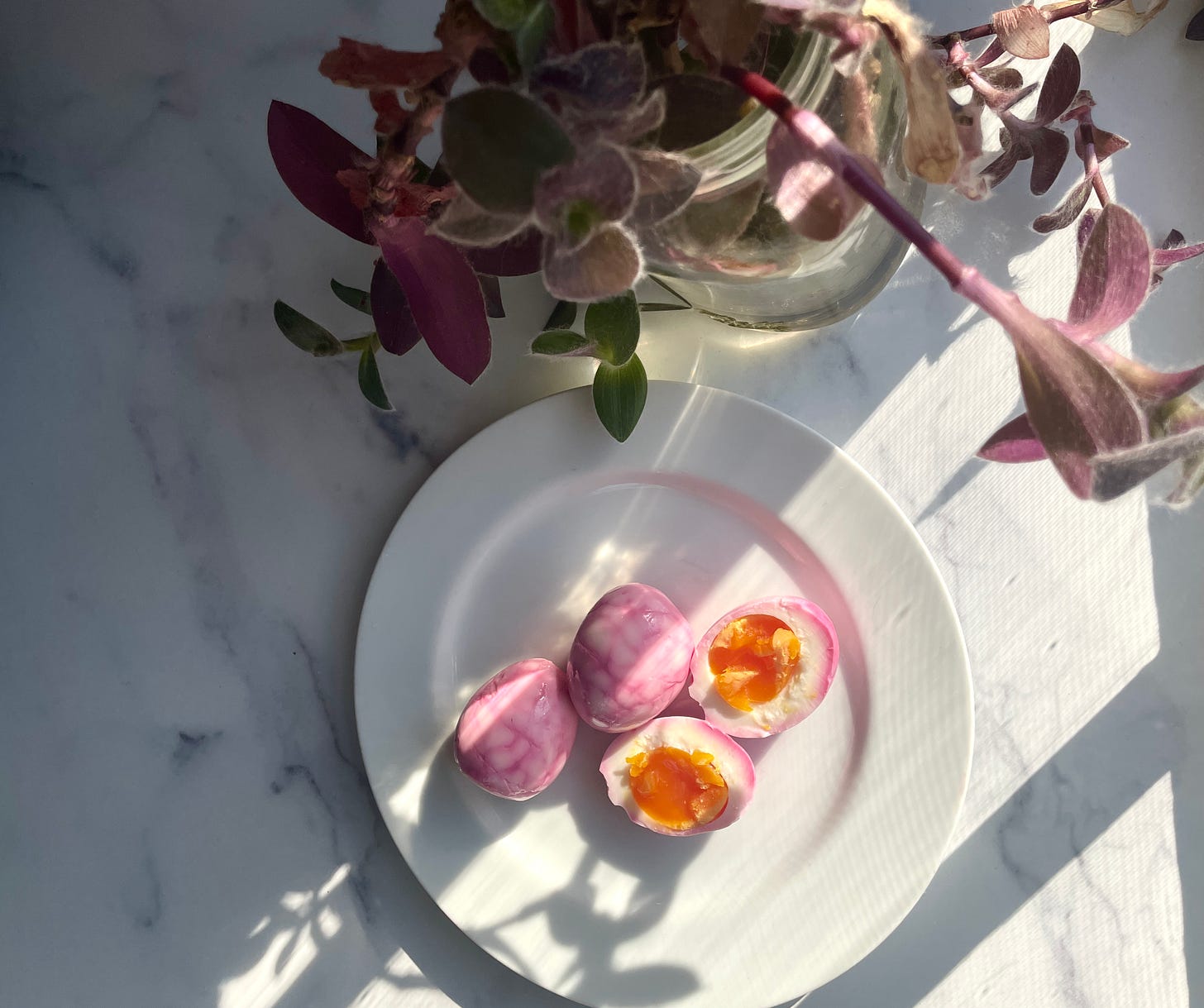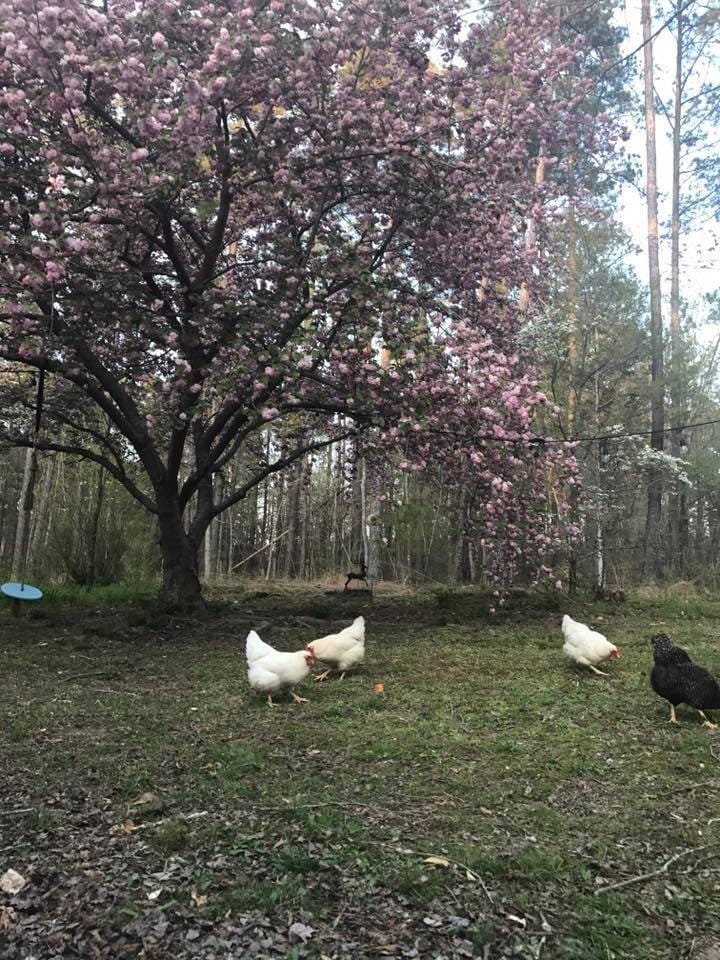*blame my son for making me listen to too much Kanye these days
A Tradition of Eggcellence
Throughout my own childhood and my son’s, our family egg hunts have always featured real eggs. I can still picture my handsome father in his Easter finery, sitting on the screened porch, eating boiled eggs out of the basket of eggs I had found in my aunt and uncle’s backyard.
A love of eggs is something my dad and I have always shared. While other kids got in trouble for eating too much candy, my mom was constantly shooing me away from the deviled egg platter. When my dad tells the story of breaking into the the field kitchen in the Vietnam War to steal food, a dozen eggs were his prize.
In the rural sustenance farming tradition of my great grandparents, eggs were money. Many of our most beloved and oldest baking traditions stand out because of what’s missing: eggs! Biscuits, cobblers, fried pies, apple stack cakes, even cornbread, were all made without any eggs at all. Now, eggs were enjoyed for breakfast and prized for both their flavor and nutrition, but eggs in baking were mostly considered a waste when they could be traded at the market for coffee, sugar, cocoa powder, and more. The women who raised the hens knew well the value eggs brought to their families and used them wisely.

Despite these family traditions, I was an adult before I realized that eggs were a seasonal food! Sure, I knew there were many spring holidays and festivals that featured eggs. Spring has long represented the beginning of a new cycle. A boiled or roasted egg on the Passover Seder plate symbolizes the cycle of life, rebirth and renewal. Easter egg hunts have their origins in ancient Pagan spring traditions associated with the Goddess of Fertility.
Symbolism, Sure, but Seasonal?
In natural conditions, hens’ egg production is dependent on hours of daylight. During short winter days, egg production slows down drastically or even stops. Come spring, longer days spur egg production. Plus, increased sunlight means lots of new greens and bugs for hens to graze. The deep minerally flavor and startling color tells us that chickens that eat healthier, more diverse diets produce more nutritious eggs, and recent studies confirm this traditional wisdom.
There isn’t much I miss more about our North Carolina homestead than our flock of hens. They were less trouble than my dog or cat - and such a joy to watch waddling around our yard. Plus from early spring through summer, we were rewarded with nature’s Easter eggs. Charmingly freckled and bumped on the outside and ranging in color from blue to brown, the eggs revealed vivid mango-colored yolks that stood up rounded and firm when cracked into the frying pan. And the taste! The eggs are rich and minerally, reflecting their grassy terroir.
Though I am often tempted to join Philly’s renegade flock-tenders, early-season farmers’ markets - and even my local co-op, have high quality pastured eggs in good supply this time of year.
The best eggs of the year deserve star treatment. My teen has aged out of egg hunts so I decided to turn my favorite jammy eggs into a lightly pickled, pink-crackle dyed beauties that shine atop salads, on toast, at the brunch table, or with pickled eggs’ old friends, beer and bourbon. I’m not ready to let go of dyeing Easter eggs just yet so I will dye them in my pickle brine. The crackling technique is inspired by the tradition of making Chinese tea eggs
While they may be hot pink, these beauties are not the scary, dusty old jar of fluorescent pickled eggs you might find in the back corner of a gas station or dive bar, like Moe’s.
These pickled eggs are truly something special! The spiced pickle brine brightens the unctuous, umami bombs into the perfect bite: salt, fat, acid, & a little spice. Trust me, you’ll want to eat these early and often to celebrate one of early spring’s greatest gifts.
Keep reading with a 7-day free trial
Subscribe to Preserving the South to keep reading this post and get 7 days of free access to the full post archives.






